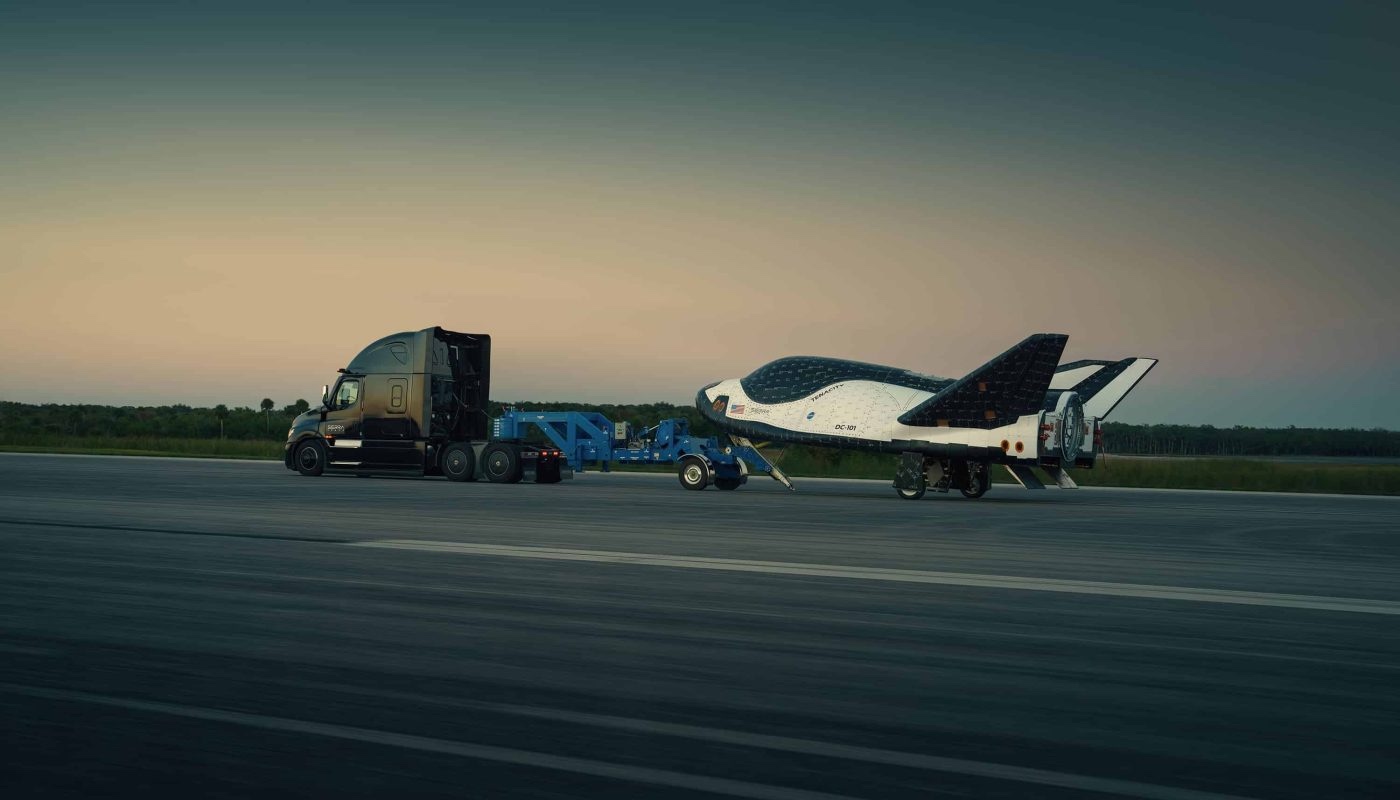**Sierra Space Advances Dream Chaser Testing, Eyes Civil and National Security Missions**
WASHINGTON — Sierra Space has achieved significant testing milestones for its Dream Chaser vehicle as the company explores a range of civil and national security missions for the reusable spaceplane.
On November 13, Sierra Space announced that the first Dream Chaser vehicle, named Tenacity, successfully completed electromagnetic interference and compatibility testing at NASA’s Kennedy Space Center (KSC).
“We completed the electrical system closeout and verified that, as we operate the vehicle, we’re not interfering with ourselves or Dream Chaser’s launch vehicle,” said Dan Polis, vice president of engineering solutions at Sierra Space, in a recent interview.
In addition to electrical testing, the company conducted high-speed tow tests at Space Florida’s Launch and Landing Facility—the former shuttle landing runway at KSC. During these tests, a truck pulled the spaceplane along the runway to evaluate landing operations.
“These tow tests verified the closed-loop performance of the spaceplane’s navigation systems,” Polis explained. The tests also confirmed that Dream Chaser can communicate both in line-of-sight mode and through NASA’s Tracking and Data Relay Satellite System (TDRS) network to Sierra Space’s control center in Colorado.
Looking ahead, Sierra Space plans to conduct launch acoustics testing of the vehicle in December. Polis noted that the company has already completed tests on the separate Shooting Star cargo module, which is designed to fly attached to Dream Chaser.
Dream Chaser has been in development for several years, primarily aimed at providing cargo transportation services to the International Space Station (ISS). In 2016, Sierra Space secured a Commercial Resupply Services 2 (CRS-2) contract from NASA, which originally included seven missions to the ISS.
However, in September 2024, the company revealed that NASA agreed to modify the CRS-2 contract to cover only a single flight planned for late 2026. This upcoming mission will not dock with the ISS but will instead test the vehicle’s capabilities in low Earth orbit. NASA retains the option to order additional cargo flights under the revised contract.
At that time, Sierra Space indicated it was shifting its focus toward potential national security applications of Dream Chaser, though specific details were not disclosed.
Following the upcoming acoustics testing, the company plans to ship Dream Chaser back to Colorado where “modifications for national security applications will be explored and performed,” according to the announcement.
While Polis did not discuss specifics about these applications, he confirmed that further vehicle testing will take place in Colorado. This includes hot-fire tests of Dream Chaser’s propulsion system and comprehensive “day in the life” tests involving hardware and software integration.
After completing these phases, the spaceplane will return to Florida for final launch preparations.
With the decision to forego an ISS mission for this demonstration flight, the test program is being adjusted accordingly. “We will gear our verification so there are some pivots away from things we were doing for a station-first mission, and pivot toward our new potential customers,” Polis said.
Tenacity arrived at Kennedy Space Center about a year and a half ago for what Sierra Space described as final vehicle testing. Initially, the plan was to launch Dream Chaser on the second flight of United Launch Alliance’s (ULA) Vulcan rocket in late 2024.
However, in June 2024, Sierra Space agreed to relinquish its launch slot. ULA, facing schedule pressure to certify Vulcan for national security missions, needed to perform a launch before the end of the year.
Polis emphasized there was no singular issue causing delays with Dream Chaser’s launch. “As with any complex vehicle, we’ve worked through non-conformances as we get to final vehicle integration,” he said. “I wouldn’t say there was one thing.”
Another factor influencing the timeline was “getting mutual alignment with NASA” on the vehicle’s future to fully exploit its flexibility for multiple platform applications.
While Sierra Space is placing a strong emphasis on national security uses for Dream Chaser, the company remains open to supporting the ISS or future commercial space stations—also known as commercial low Earth orbit destinations (CLDs).
“NASA is a critical customer,” Polis stated. “We ultimately want to be their service provider after this first flight, and through their CLD partners, so we have an eye on all of those requirements.”
He added, “This is a multi-purpose vehicle, and we see it fitting both national security and civil space. NASA has been a great partner. We believe the contract realignment really showed their commitment to the vehicle.”
As Sierra Space continues advancing Dream Chaser’s development, the space community watches closely to see how this versatile spaceplane will serve a broad spectrum of missions in Earth’s orbit and beyond.
https://spacenews.com/dream-chaser-completes-key-tests-ahead-of-first-flight/
